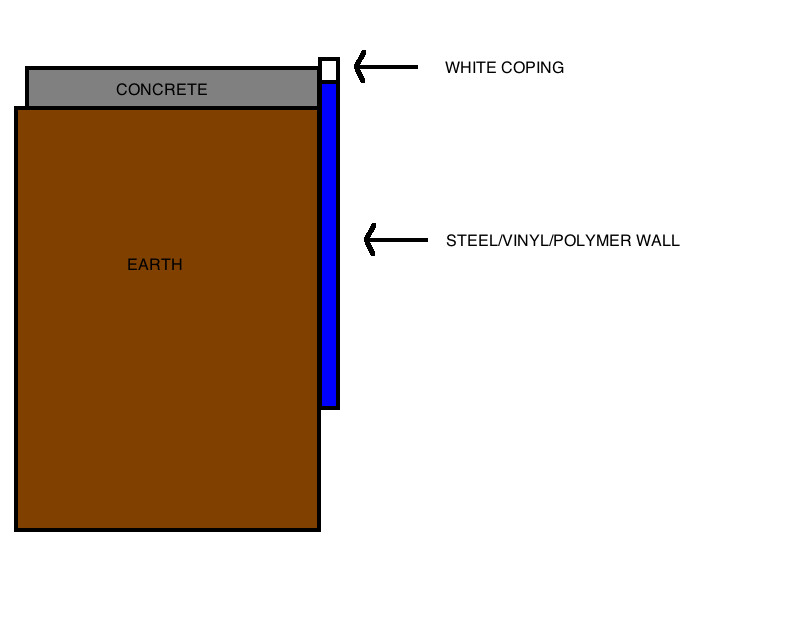I have decided to fill in my inground pool next spring, and am doing some upfront planning. My understanding of the "anatomy" of an inground pool wall is this:
So as you can see, the concrete patio sits on top of raw earth/dirt, and the wall (I'm not sure at this point what its made of, likely polymer) has some coping sitting on top of it (I forgot to include the liner which would obviously be on the outside of the wall and terminate in between the wall and the coping).
So first off, if my diagram is horribly incorrect, please begin by correcting me!
So I want to fill this in. Let's wave a magic wand and pretend we don't have to worry about building codes, and let's say that I have no intentions of ever building any structure/foundation over the pool at anytime. (If my comment about building code offends you, the "TL;DR" version is: I live in an extremely rural, 1-traffic-light town that has no building & code enforcement office. The town clerk claims that they delegate all building code enforcement to the county level. I called the county code enforcement office and they have no idea what the town clerk was saying and they claim they have no jurisdiction and never even set foot in the town I live in. LOL. Murica!)
Now then, the problem at hand. If my diagram is correct, then when I bust up the concrete (I'm going to rent one of those bobcats with a jackhammer attachment and just destroy everything in my path), there will be some 4 - 12 inches of wall exposed above the ground. Thus my thinking is that I will need to dig a trench and "cut" out this 4"-12" of wall around the entire perimeter of my pool like so:
Any ideas as to how I might accomplish this? Of course, if my understanding about pool "anatomy" is incorrect, I might not even have this problem in the first place.


